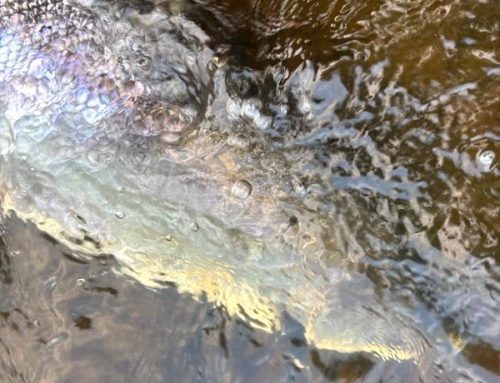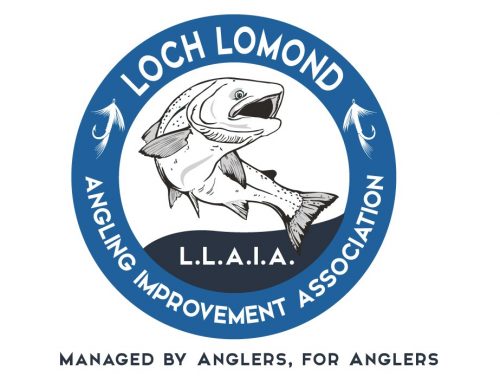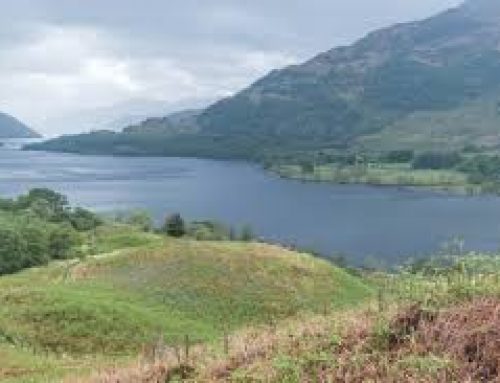Fishery Improvement Plan
In our last update we mentioned that the committee is currently engaging with the Scottish Centre for Ecology and Natural Environment (SCENE) at Rowardennan in drawing up improvement plans for the system.
SCENE have now replied with suggested projects involving research, monitoring and improvement as follows:
- Fish passage estimates using a camera trap
This study would involve setting up an underwater camera (for example, a GoPro) to enable a partial count of migrating adult salmon and sea trout for key periods of the year. While not a fully quantitative method, at a right location it could provide valuable information. This footage could form the basis of Facebook or Twitter posts to demonstrate fish passage and activity to members and the wider angling community but would also provide data which if collected over enough years could determine population size change.
- Nutrient loading to improve juvenile salmon growth
Previous research has shown that adding nutrients to rivers to improve the invertebrate population in the form of analogue salmon carcasses (dried hatchery salmon pellets) leads to increases in juvenile salmon size. As larger smolts have been shown to have higher survival this could very beneficial. There may also be other benefits (including higher fry survival leading to increased fish densities). This study would include choosing a study stream and doing two preliminary surveys: an electrofishing survey to establish the number and size of existing salmon juveniles and an invertebrate survey to establish the species composition. After initial surveys, nutrients are added and follow-up surveys will be conducted to study any potential effects on the fish (density and size) and invertebrates (density and species composition).
- Salmonid habitat assessment and improvement
One of the best ways to maximise natural smolt production is to ensure pristine and barrier-free habitat that allows unimpeded migration for spawning adults and downstream migrating smolts, has suitable spawning gravels and good juvenile habitat. This study would include assessment of available habitat (either a focused study on one area or a wider survey) and identifying any issues for salmonid production, with the aim of mitigating these issues. Key aspects of this study would be removal of any barriers for spawning adult salmon (to maximise available spawning habitat), improving spawning habitat (by reducing erosion, reducing sediment build-up and adding spawning gravels) and improving juvenile habitat (through, for example, maintaining good water quality, providing sufficient in-stream cover and tree planting to increase shade and cover). The effects could be assessed through electrofishing surveys and redd counts before and after the improvement works take place.
- Impact of bird predation on salmon smolts
Bird predation is often suggested as one of the main reasons for smolt mortality but there is limited direct evidence for this. With the LLAIA having a license to cull birds, a study could be built around this. Bird culling should be initiated after the smolt run has started to get the best estimate of predation focus. A stomach content analysis would be done for the culled birds to establish the species and number of fish eaten.
Another approach to study bird predation would be monitoring their numbers in certain locations, either through regular surveys or using a camera trap, before and during the smolt run to see whether fish-eating birds are congregating in certain areas during the smolt run.
Comment
Proposal 1. This information would be useful in adding to the bigger picture of the system’s health but not as a replacement for a fish counter. The LLAIA and LLFT have both discussed the siting of a counter on the River Endrick SAC with Marine Scotland and the matter is still live.
Proposal 2. This type of work is already carried out on other systems. Obviously the healthier our smolts are the better their chance of survival.
Proposal 3. Removal of obstructions and habitat improvement is a system priority.
Proposal 4. We are licensed annually by SNH to shoot a very small number of fish eating birds as ‘an aid to bird scaring’ in conjunction with other suggested techniques. The impact of feb’s on smolts is widely known but without strong evidence SNH will not react. Marine Scotland are now considering this nationwide problem. As we need to provide as much evidence as possible to increase our cull level this proposal would be a very worthwhile project.
The Institute for Fishery Management (IFM) have produced a ‘Code of Good Practice for Fisheries Management’ document which looks at all aspects of modern fishery management. If anyone has an interest in fishery issues then this document is well worth a read. The LLAIA will ensure that any future projects adhere to these guidelines.
https://ifm.org.uk/wp-content/uploads/2016/02/IFM-Final.pdf
Our main priority is to maximise and protect our juvenile salmon. IFM clearly state:
‘Predatory fish and birds also get more chances to catch smolts when they are delayed on their migration. It is known that very high proportions of smolts can be lost if they have to migrate through large lochs or reservoirs that have predatory fish in them.’
It has been suggested by one of our members that to help mitigate smolt mortality it may be an idea to transport smolts entering the LLFT’s traps in the River Endrick during the April – May smolt run from the Endrick and release them in the lower reaches of the River Leven. This would involve close cooperation with the LLFT. There would of course be logistical issues and licensing required from Marine Scotland to move fish. This proposal has been passed on to SCENE for comment.
The committee will now discuss these projects and decide which to proceed with, then after further consultation with SCENE on costing we should be in a position to get work underway fairly soon.
Over the past few seasons we have appealed for volunteers to come forward to help with improvements without any response. Much of this work could be carried out quite easily by ourselves but as the situation is unlikely to change will be contacted out at cost to the Association. If anyone has time to spare and interested in the system’s future please get in touch.
Regards,
Jim Raeburn
LLAIA Chairman




